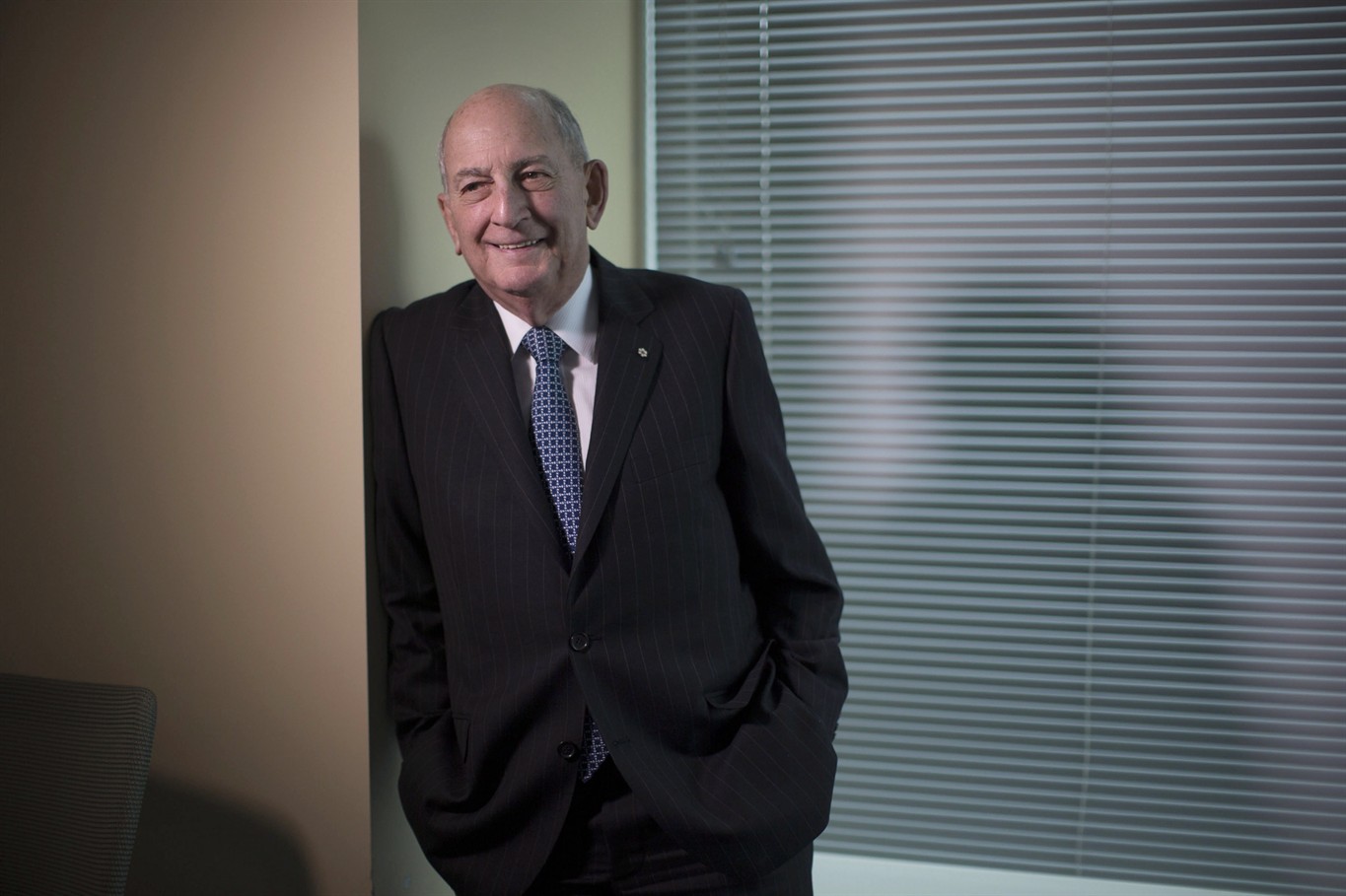TORONTO – Canadian-born business magnate and philanthropist Charles Bronfman has worn many hats throughout his career, but sporting the tri-coloured cap of the Montreal Expos helped him emerge from the shadows of his famous family name.
Before becoming chairman and majority owner of Canada’s first Major League Baseball team, Bronfman was the heir to a homegrown dynasty. His father, the late Samuel Bronfman, was the force behind distilling giant Seagram, known for its portfolio of marquee liquor brands including Crown Royal whisky and Captain Morgan rum.
In his memoir “Distilled” (HarperCollins), co-written with author and broadcaster Howard Green, Bronfman reveals how his involvement with the Expos helped the self-described late bloomer come out of his shell.
“It was the first thing I had ever done on my own. I did not have — nor did I ask for — family backing,” recalled Bronfman of his stint with the Expos from 1968 to 1990.
“When I went to my dad and I told him that I wanted to do this, he said: ‘Do you have the money?’ And I said: ‘Barely.’ And I think he thought I was in his office to hit him up for a loan or to get my siblings to join me.
“When I told him I’d do it myself, he became the Expos’ biggest fan, because what he wanted to know was: ‘Does his son have some guts?'”
Tim Raines, Andre Dawson and late Hall of Fame catcher Gary Carter were among the players developed and signed by the Expos during Bronfman’s tenure. Despite his love of the Expos, Bronfman was admittedly not a fan of Montreal’s Olympic Stadium as a baseball venue.
“Not only was it way oversized, we tried to figure out ways we could close the upper deck but it didn’t seem to be practical,” he said.
“And also, the seats were sort of angled at a very shallow angle. In baseball, you’ve got to have them at a much steeper angle because you want to be closer to the players,” he added. “In the Big O, if you’re ten rows back you need binoculars — and that’s sort of bad. It leaves you out of the action. You might as well watch it on TV or listen on the radio.”
Two years after parting ways with the team, Bronfman was back on the diamond, throwing the first pitch in Game 3 of the 1992 World Series between the Toronto Blue Jays and the Atlanta Braves — the first such matchup played outside of the U.S.
Bronfman is also the brainchild behind Heritage Minutes, the short films commemorating significant Canadian historical events and figures. He writes in “Distilled” about the origins of the idea dating back to 1981 when he was inducted into the Order of Canada. At the time, he was struck by the fact that many Canadians would never know the stories of his fellow honourees gathered at Rideau Hall.
“Americans learn American history. We don’t learn Canadian history…. In many of the provinces, they’ll learn about their provincial history, but not about the whole country,” he said.
“When I was young, history was the most boring subject that was taught. So how do you make it fun? How do you get these heroes and these heroines, how do you get them to live and say ‘Hey, that’s great! Look at these characters!'”
“Distilled” also sees Bronfman reflect on a chapter of his life that was a source of both personal and professional pain: the sale and ultimate demise of Seagram.
Bronfman’s nephew, Edgar Bronfman, Jr., became CEO in 1994. On April 6, 1995, the company sold its lucrative stake in American conglomerate DuPont. Three days later, it announced plans to purchase a majority stake in MCA, which owned Universal Pictures and other entertainment divisions, including music and theme parks. In 2000, the company was acquired by French media and telecom group Vivendi Universal.
“It’s the kind of thing that just stays with you, it never goes away,” said the 85-year-old Bronfman. “To me at the end of the day, it was like losing a very dear friend — and maybe even more than that.
“It never goes away from you. But you go on.”
— Follow @lauren_larose on Twitter.







